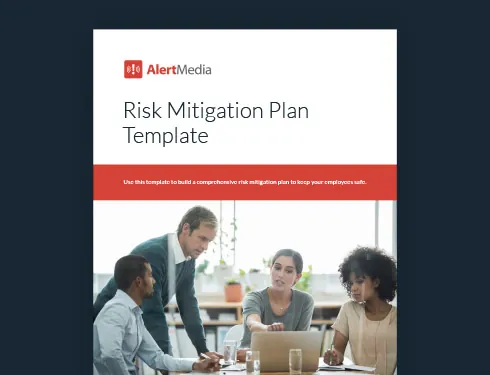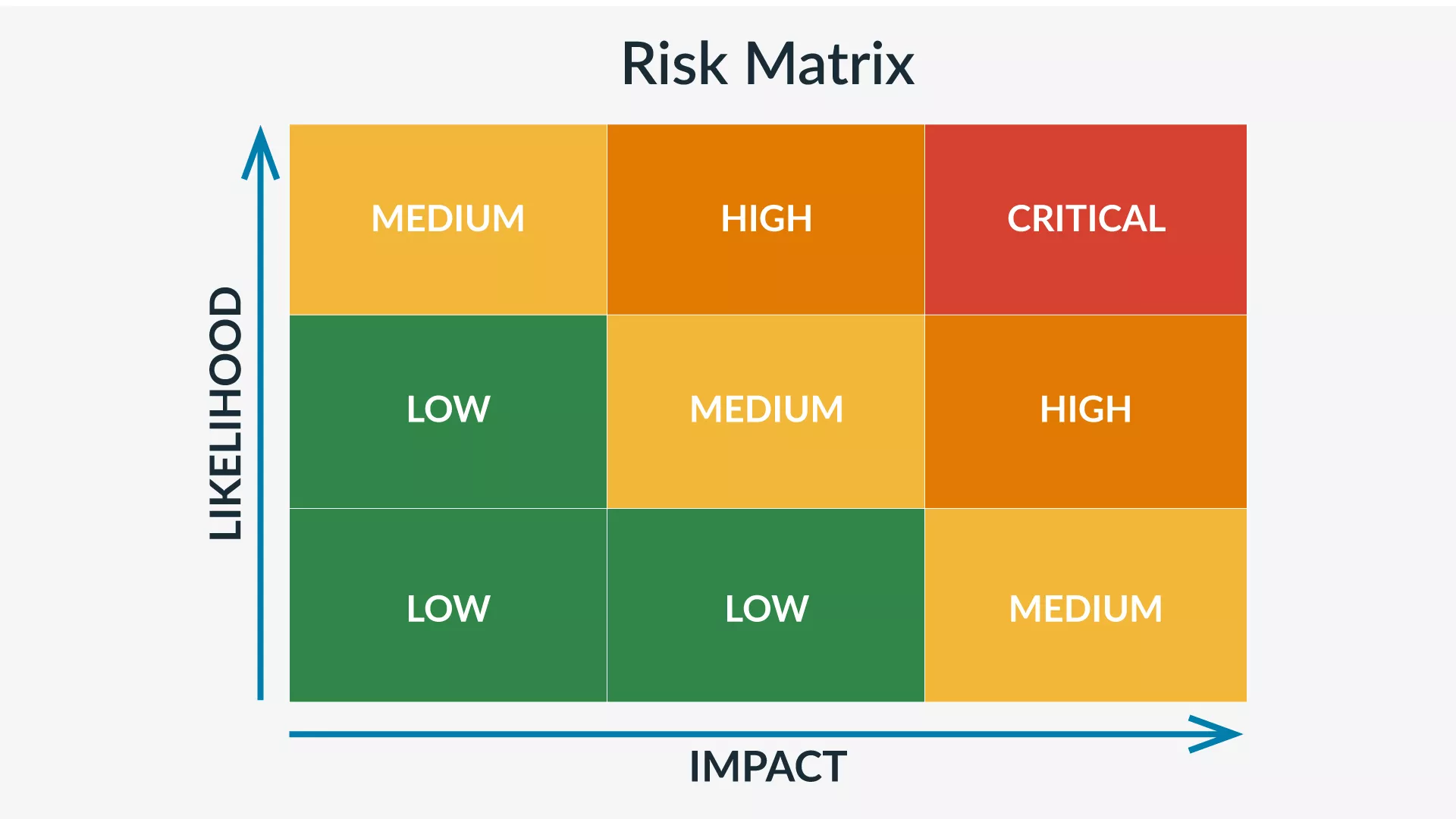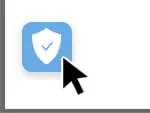
The Ultimate Guide to Risk Management Planning
Unexpected setbacks shouldn’t derail your progress. A robust risk management plan equips your business to face disruptions head-on, respond with agility, and emerge stronger.

Knowing what could go wrong is the first step to making things go right—from protecting employee safety to ensuring operational continuity to managing complicated supply chains.
Thinking proactively about your potential risks is key, explains Lukas Quanstrom, Co-Founder and CEO of Ontic, in an interview on The Employee Safety Podcast. “By adopting a proactive security approach, you can collect pre-incident threat indicators to gather critical knowledge needed to prevent bad things from happening. These pre-incident indicators come in many forms: perhaps it’s a threatening letter, a dark-web post, or an employee tip.”
This approach is known as risk management, a system that helps industries and professionals safeguard projects, ensure business continuity, and strengthen security. A risk management plan is essential for protecting key objectives and keeping projects on track by prioritizing risks and reducing their impact.
Download Our Risk Mitigation Plan Template
What Is a Risk Management Plan?
A risk management plan (RMP) documents all the potential risks and obstacles that could impact a given project or initiative. The document lists a range of possible outcomes and explains how the project team will track, manage, and/or eliminate those risks.
Other documents like business continuity plans, disaster recovery plans, and risk assessments are similar but generally cover a much larger scope and account for a broader set of potential threats.
A risk management plan will cover more focused risks with targeted reporting and response requirements. For example, one risk to a project could be a key team member taking unexpected time off due to illness or injury. The plan should outline the potential impact, how to deal with the scenario, and who will be involved in addressing any skill or labor gaps.
Project risk management plans are a great tool for project managers and emergency managers alike. These plans are:
- Flexible and applicable to any project
- Completed before an emergency so an emergency response can occur quickly and effectively
- Suited for both emergency and non-emergent situations
- Easily shared among departments and stakeholders
Key elements of risk management plans
A risk management plan’s exact structure will depend on your company’s size, industry, and project scope. But there are certain critical components for any plan:
- Strategy: Start by outlining your overall risk management strategy. This should include organizational policies, the scope of the risk management plan, and a general description of your risk management approach.
- Methodology: This section covers processes, information sources, and systems you’ll use in your risk management plan. You’ll list any documents like project plans, specifications, and schedules here, as well as software platforms you use to store information.
- Roles and responsibilities: Build out a list of roles related to the risk management plan and who in your organization will take on those responsibilities. This list covers everything from plan development and authorization to implementation, risk monitoring, and auditing.
- Schedule: Separate from your project schedule, you need a timetable for risk management activities. For example, you’ll schedule development time up front, periodic risk reviews throughout a project life cycle, and a post-mortem once the initiative is complete.
- Definitions: This section lays out definitions for risk probability and impact. Clear thresholds—such as less than 5% for “very low probability” or under $5,000 for “low impact”—will help develop your risk matrix.
- Risk categories: Classify the types of risk for the plan. Categories could include organizational, technical/cybersecurity, and external, or they could be based on project objectives or cost breakdown.
- Risk matrix: Using your definitions and categories, construct a matrix mapping individual risks on two axes: probability and impact. A risk matrix is a visual tool with color-coded values to help prioritize critical risks.
- Risk register specifications: A risk register—separate from the risk management plan—will allow you to track the success of your risk management plan. This section will outline the risk register’s format and how often it will be updated and shared with stakeholders.
Risk management plans are ubiquitous and applied in every industry. Safety leaders across the country have shared unique risk management plan templates and methodologies. Download this free template to make building your plan much easier.
How to Create a Risk Management Plan
Building a risk management plan can seem intimidating, but it doesn’t have to be.
Here is what the process looks like:
1. Find key stakeholders
The first step is determining who should be involved in your risk management program. Include project managers or team leaders, key employees, and additional stakeholders. Sometimes, it’s helpful to loop in subject-matter experts, even if they won’t directly work on the project.
Decide who needs to be involved, and then create a communication plan for when and how you will bring them into the planning process. Some stakeholders must be involved in creating the plan, while others must only be informed once it’s complete.
Once you have a list of stakeholders, meet with as many of them as possible. Involving everyone at the same time to minimize missing key details and keep the whole team’s priorities aligned.
2. Identify and qualify project risks
Next, perform risk identification to determine your specific risk events and qualify them to help you better prepare. The level of detail you go into in this step will significantly depend on your organization’s scale, industries, deliverables, and a project’s importance to the business. The more critical the project is, the more detailed your risk analysis should be.
How to conduct a risk assessment
This video will help you facilitate an effective risk assessment at your organization.
The best way to do this is to gather all the key stakeholders for a brainstorming session and list all potential negative impacts. These can be as simple as running out of a key resource or as complicated as an unexpected natural disaster, but they should all clearly pose a risk to the project’s completion or deadline.
Suppose you‘re integrating a risk management plan into your existing emergency plan. In that case, you can use your risk assessments or business continuity plans as references for figuring out what risks your business usually faces.
Once you have your list of known risks, qualify the level of risk in each case. The best way to do this is to create a risk assessment matrix. A risk matrix involves analyzing risks in two dimensions:
- Likelihood: How likely is it for the risk to materialize? Disruptions with a one-in-a-thousand chance are very different from ones that will happen 50% of the time you undertake a given process.
- Expected impact: What negative consequences will the risk create? This will often be quantified in dollars, but it can also include the possibility of business disruption, injury, or even death.
Considering these two factors in concert will help you prioritize your risk management strategy. Addressing a risk with a high probability and severe impact is critical. However, if it is unlikely to happen and carries minimal consequences, you might be better served deprioritizing it.
Once you’ve identified and assessed all your potential risks, you can track them in a risk register. A risk register is a risk assessment tool serving as a centralized database for identifying, assessing, and managing risks associated with a business operation or project. It expands on your risk assessment to include information like the description of each risk, the probability of occurrence, the potential impact of a risk, any mitigation plan, and risk response statuses.
Comprehensive risk identification has three key benefits:
- You’ll know what to expect and won’t be surprised by emergencies
- You can plan your risk response carefully
- All of the key stakeholders will be aware and can work to keep the project on track
There will always be uncertain, unpredictable events. But the more you can identify risks in advance, the more likely you’ll react quickly instead of feeling overwhelmed or confused about how to respond.

3. Create risk response
Once you’ve mapped your list of specific threats in a risk matrix, the next step is to plan your response for each scenario based on your risk tolerance.
There are four primary risk responses you can employ:
- Avoidance: This involves changing the project to neutralize the risk. Some examples of risk avoidance include changing schedules to avoid extreme weather or finding alternatives to dangerous, unnecessary processes or equipment.
- Transference: Sometimes, shifting responsibility for a risk to a third party will increase the chance of project success. For example, most organizations will hire contractors to operate heavy machines like cranes, as they lack the internal skills and experience to do it effectively.
- Mitigation: You can monitor and control many risks so that even if they occur, their impact remains minimal. Risk mitigation is an active, real-time approach to managing threats while keeping their effects in check.
- Acceptance: Some risks are so unlikely or have such a minimal impact that they can be left unaddressed. For example, if a process fails just 1% of the time and only causes 15 minutes of lost work, the cost of prevention may outweigh the inconvenience of occasional disruptions.
Your response depends on where the risk falls on the matrix. Address high-level risks with project stakeholders and avoid them when possible. Accept or mitigate low-level risks as needed. Defining your approach early on gives you the time and strategy to manage risks effectively.
Again, you can pull successful responses from your other emergency planning documents, but specify how you will tailor your response to this project’s scope. In case your original action plan fails, you must include contingency plans for high-impact threat responses.
It is crucial to assign a specific person to each risk response. These “risk owners” take responsibility for key aspects of your risk management strategy, and you can ensure they are trained in the processes relevant to their role.
4. Document and communicate your plan
Now that you have your list of risks and responses planned out, it’s time to document.
Clearly outline each risk and your response strategy. Include who is responsible for enacting the risk response plan. Document how you will gauge the success of your risk mitigation strategies and communicate progress. Make sure whoever is responsible for tracking the outlined risks knows who to contact for each possible response.
Once you have your risk management plan, distribute it to each person involved in the project, even if they aren’t responsible for any of the risk responses. That way, everyone on the project knows who to go to if a risk does arise.

5. Monitor, review, and reiterate regularly
Your risk management plan should be a living document, not a static one. Effective risk management requires ongoing adaptation. As your organization or project evolves, new risks may emerge due to changing internal and external conditions. Regular reviews ensure your strategies stay aligned with the current risk landscape.
A strong risk management plan includes key guidelines for monitoring and reporting risks:
- A regular review schedule, even if no risks have materialized recently
- Protocols for emergency reviews when you encounter risks, whether foreseen or not
- A list of risk management team members to involve, whether it’s for evaluation or just communicating results
- Key metrics and milestones for both the project and its risk management plan
This process also allows you to assess the effectiveness of implemented risk responses and make improvements. For instance, if your risk management plan estimated a $5,000 impact from an equipment failure, but the actual cost reached $15,000 due to repairs and downtime, it’s crucial to capture this discrepancy during the review phase.
While you can’t prevent the risk mid-project, understanding the increased impact helps refine decision-making and adjust preventative or mitigating measures.
Risk Management Best Practices
Identification and response are the core of an effective risk management process. However, a few best practices can help you refine your plans and set projects up for smooth execution and ideal outcomes.
Determine risk triggers
Most risks your organization encounters will have warning signs or conditions that signal the risk is about to materialize. These indicators, known as risk triggers, are crucial to effective risk management.
Once you’ve identified your risks and developed responses, consider how to monitor the possibility of the risk. Say you’re running a project involving running delivery trucks 24/7 in the New England region. For several months out of the year, extreme weather presents a serious risk. At best, it could lead to delays. At worst, accepting the risk could lead to destroyed equipment and severe injuries or death.
In this scenario, a newly arrived storm is a risk trigger. By monitoring weather forecasts, you can see the risk forming, track its severity, and determine when it has materialized enough to enact your response plan.
Manage risk thresholds
Based on your risk assessment matrix, every potential hazard has a risk threshold—the point at which a risk’s probability and impact become unpalatable. But to optimize your risk management plan, you must constantly re-evaluate your risk thresholds based on changing conditions.
In some cases, this could involve a shift in likelihood. For example, as a project progresses, you may discover that a process fails more frequently than anticipated. Does this new failure rate still fall within your risk threshold, or should you reassess the activity? The impact may change at other times, especially regarding the project schedule. As the project nears completion and slack time dwindles, what initially seemed like a minor issue could ultimately jeopardize your deliverables.
Maintain constant communication
Risk management plans are dynamic, and your organization’s readiness must evolve alongside them. Communicate any significant changes to everyone involved in the project and ensure key stakeholders hold regular review sessions to monitor and address risks.
It’s also important to integrate your risk management plan with your organization’s other means of communication. This can take a variety of shapes, but it usually includes the following:
- Make risk management plans available on your company intranet and at job sites.
- Use your emergency communication system for risk response and regularly test the process to ensure proper functionality.
- Build risk management updates into the project management workflow to give management and external stakeholders sufficient insights.
- If your organization has specific compliance requirements, work with your legal or regulatory teams to build them into your communication strategy.
Risk Management Plan Examples
No two risk management plans will be identical. A construction company operating in three states will face vastly different risks from an international energy company. While your plan will be unique to your organization, seeing what others are doing is often helpful.
Many government agencies make sample risk management plans available on their websites. For example, the Tennessee State Government provides a template, as does the Connecticut Department of Social Services. If your organization is subject to specific jurisdictions, consulting with them and requesting examples can give you a quick head start on the process.
In other cases, industry groups are valuable resources. Healthcare organizations, in particular, carry a heavy burden, being responsible not just for employees but also for the safety of patients. Risk management in healthcare generally involves far more detailed plans than in other industries, as the consequences of risk are much more significant. The Healthcare Provider Service Organization has a sample risk management plan on its website and many other risk management resources.
Maximizing Management to Minimize Risk
Risks are inherent in every project, but a dynamic, well-communicated risk management plan equips you to make informed decisions and minimize potential harm. Creating and maintaining a comprehensive plan empowers your team to stay on course and, most importantly, safeguard each other.






